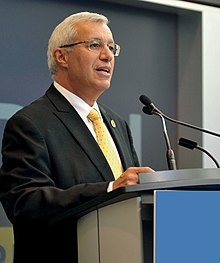The Voice of Canada News:
Move. Commute. Connect. This is B.C.’s new strategy for cleaner, more active transportation, connecting British Columbians to where they need to go.

“Active transportation is good for our health, environment and communities,” said Claire Trevena, Minister of Transportation and Infrastructure. “For years, people have been asking for better, more healthy options to get around. We’ve listened, and we’re taking new steps to help people move, commute and connect more easily and safely.”
As part of the Province’s CleanBC plan to build a better future for all British Columbians, the strategy helps transform how people get around in a way that reduces pollution and leads to better health, while making communities cleaner and more liveable. The strategy aims to double the percentage of trips taken with active transportation by 2030.
“Our government is focused on protecting the environment and working in partnership with communities to improve our walking, cycling and other active networks,” said George Heyman, Minister of Environment and Climate Change Strategy. “By making it easier for people to move around our communities using active transportation, we cut down on carbon pollution and help make life better for people.”
In unveiling Move. Commute. Connect., Trevena announced that the strategy will encourage British Columbians of all ages and abilities to choose active transportation, with specific steps to:
- inspire British Columbians of all ages and abilities to choose active transportation with incentives that encourage active transportation use – like the Scrap-It e-bike rebate, Learn to Ride programs and Active and Safe Routes to School;
- build on the success of the BikeBC program, so communities can build integrated and accessible active transportation systems that work for all active transportation users; and
- work together with communities to create policies and plans that enable and support complete active transportation networks around the province.
The strategy was developed after a provincewide consultation where British Columbians provided feedback on ways the province can support communities to improve active transportation linkages between neighbourhoods, transit facilities and town centres.
“We all have a part to play in protecting our environment, and for more and more people, that means walking, cycling, skateboarding or using a scooter to get where they’re going,” said Spencer Chandra Herbert, MLA for Vancouver-West End. “Let’s work together towards creating community-specific active transportation networks that are safe, affordable, accessible and convenient for people of all ages and abilities.”
An Active Transportation Design Guide was also introduced to make it easier for communities throughout B.C. to incorporate active transportation into their infrastructure planning.
CleanBC is a pathway to a more prosperous, balanced and sustainable future. CleanBC was developed in collaboration with the BC Green Party caucus and supports the commitment in the Confidence and Supply Agreement to implement climate action to meet B.C.’s emission targets.
Highlights of Move. Commute. Connect. include:
- reviewing the Motor Vehicle Act to address the definition of road users, to include emerging active transportation modes, such as electric bikes, scooters and skateboards;
- expanding the existing BikeBC grant program so communities can build safe, active transportation networks and connections that include all active travel choices;
- working with ICBC to develop educational material that focuses on the rights and responsibilities for all road users, to increase safety and reduce serious injuries;
- encouraging more end-of-trip support facilities and other infrastructure to make active transportation easier and more convenient for commuters;
- making the new Active Transportation Design Guide available to local governments, helping communities to consistently use best practices when planning their infrastructure;
- working with partners to reduce serious injuries and eliminate fatalities by encouraging adoption of Vision Zero principles outlined in the B.C. Community Road Safety Toolkit;
- aligning provincial policies, programs and funding to support the growth of active transportation, and to make it more accessible for people of all ages and abilities, no matter where they live; and
- working with local governments, communities and Indigenous groups to support local and regional network planning to connect communities and advance active transportation.



